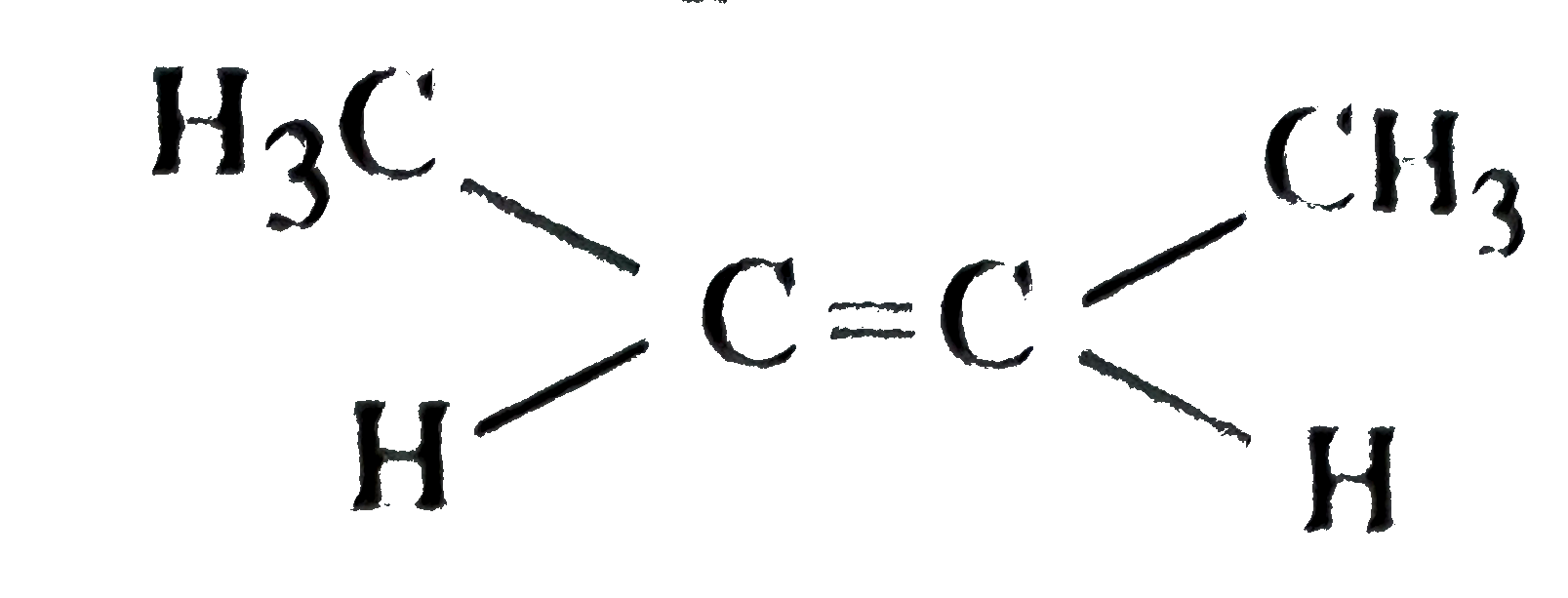AH2/Lindlar's catalyst←−−−−−−−−−−−−CH3C≡CCH3Na/Liq NH3−−−−−−−−→B A and B, respectively, are
A
cis, trans-but-2-ene
B
both trans-but-2-ene
C
trans, cis-but-2-ene
D
both cis-but-2-ene
Video Solution
Text Solution
The correct Answer is:A
The reduction of internal alkynes in the presence of lindlar's catalyst leads to the syn addition of hydrogen on account of the attachment of two H's to the same side of an alkyne sitting on the catalyst surface. Reduction in the presence of Na/liq. NH3 leads to the anti addition of hydrogen on account of the formation of vinylic radical anion.
|
Topper's Solved these Questions
Similar Questions
Knowledge Check
Catalytic hydrogenation involves addition of hydrogen to a C=Cor−C≡C−bond in presence of a metal catalyst such as Ni, Pt, Pd, etc. These are called heterogeneous catalysts. Both H2 and alkene/alkyne get adsorbed on the surface of the metal , and syn-addition of hydrogen atoms takes place. The relative rates of hydrogenation follows the order:
−C≡C−>>C=C<>C=o<C6H6
If sodium or lithium in liquid ammonia is used, anti-addition of H-atoms occurs across −C≡C−bond. These reducing agents can also be used to reduce double bonds of benzene rings and conjugated dienes but not of isolated dienes.
[A]Lindlar's←−−−−CatalystCH3−C≡C−CH3 Na in−−−−→liq.NH3[B]
[A] and [ B] are respectivelyAcis, trans-2-buteneBboth trans-2-buteneCtrans,cis-2-buteneDboth cis-2-buteneAH2/Lindlar's catalyst←−−−−−−−−−−−−CH3C≡CCH3Na/Liq NH3−−−−−−−−→B A and B, respectively, are
ACis, trans-2-buteneBBoth trans-2-buteneCTrans, cis-2-buteneDBoth cis-2-buteneH3C−C≡C−CH3Na/Liq.NH3−−−−−−−−→X In the above reaction X is
AH3C−CH2−CH2−CH3B C
C DBoth (B) and (C )
DBoth (B) and (C )
ACu←−−ΔCH3CH2OHAl2O3−−−→ΔB.
A and B respectively are :
View SolutionACu←−−ΔCH3CH2OHAl2O3−−−→ΔB.
A and B respectively are :
View SolutionPh−CH2−CH2−C≡C−CH3Na/NH3−−−−−→Cl2/hv−−−→
View SolutionCH3CH2−C−H+CH3−C=ChNa,NH3(l)→
View SolutionBLindlar−−−−→R−C≡C−RNa/liq.NH3−−−−−−−→A.
A and B are geometrica isomers (R−CH=CH−R)
View Solution